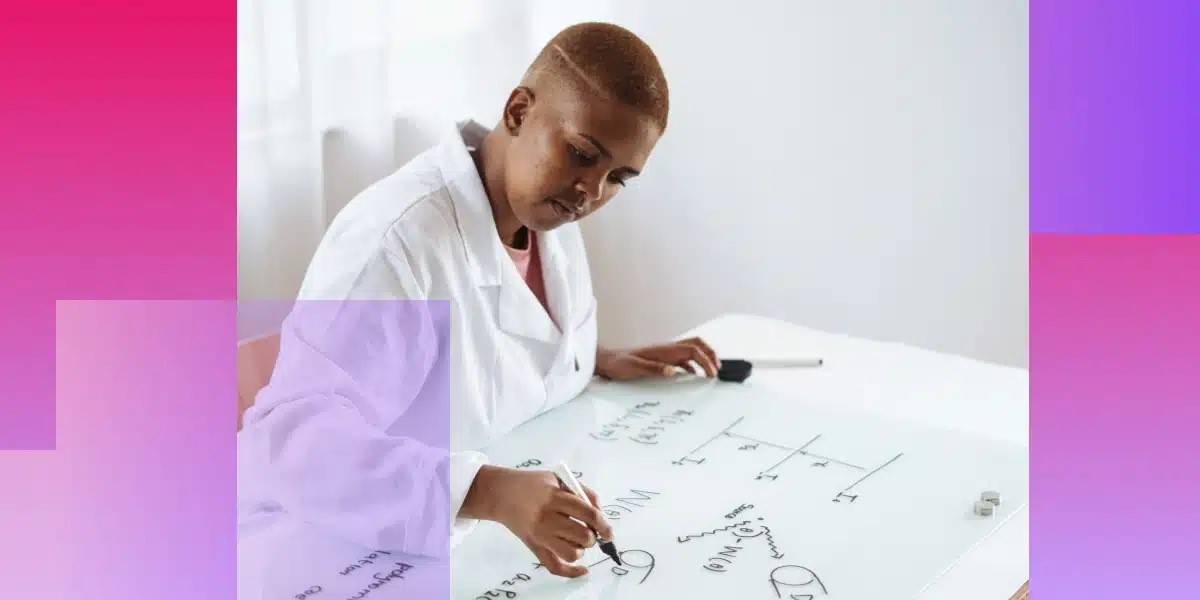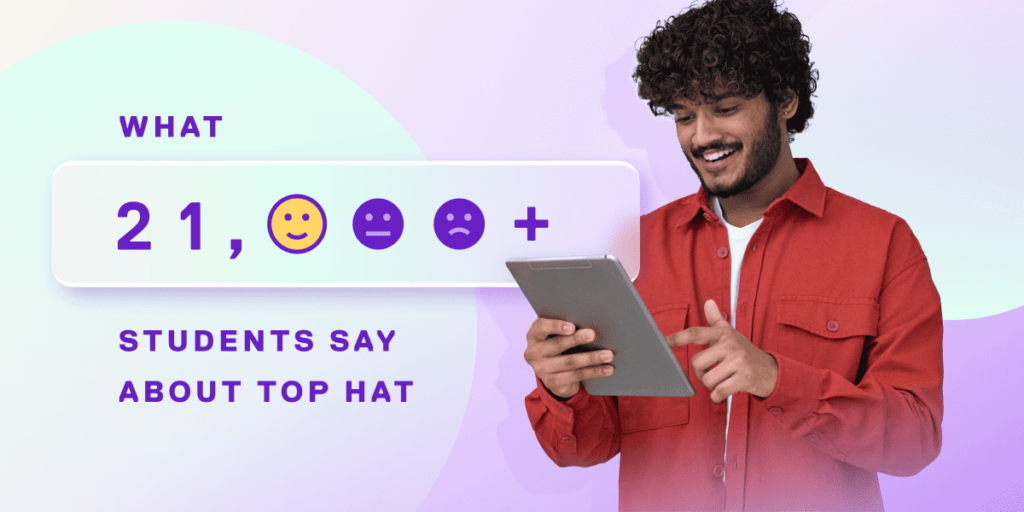The emergence of artificial intelligence has spurred anxiety and interest among university leaders, instructors, and students. The conversation in the spring largely had to do with AI’s threat to longstanding academic practices like essay writing and growing concern over whether students would use new AI-fueled tools to churn out answers. But as we gear up for the fall, the discussion has shifted from skepticism to optimism with plenty of creative solutions1 emerging.
→ Download Now: The Top Hat Guide to Intentional Course Design
AI and equity
AI creates both new threats to equitable learning and presents opportunities to advance it. Ultimately, plagiarism and student cheating are not new. When students perceive tasks as unworthy of their effort, their likelihood of cheating rises. Russ Hunt made this point more than 20 years ago when internet essay mills emerged as a new threat to academic integrity.2 While there are many reasons for student cheating, I favor his view that student cheating is often a byproduct of a poorly designed assignment.
On the positive side, there is genuine excitement over the prospect that we might be on the cusp of solving Bloom’s 2-Sigma problem.3 In doing so, we’re effectively equipping every student with a creative, intelligent, always on, personal tutor. AI promises gains in efficiency, both for overworked instructors and overscheduled students, and even invites us to set a much higher bar for student achievement.4 While not all of the implications are within our individual power as instructors to manage (though we can and should continue to advocate for institutional and social commitment to equitable access), there are real opportunities to embrace AI and enhance success for all students.
Inequity in education is real. And we know a good deal about its causes. Course readiness is a critical issue in large part due to structural inequities in K-12, and all indications are that the pandemic impact on student learning will make this an even more challenging dimension of inequity. But even controlling for readiness, inequity persists. Additional explanations include gaps in metacognitive ability5, psychosocial impacts6 (particularly in large STEM courses), and traditional assessment itself7, where infrequent, high-stakes assessments are the norm. But it’s not an entirely grim picture. With AI powered tutoring, hope is on the horizon. Instead of letting struggling students fall behind, we have a real opportunity to offer tailored support that may even suppress the urge to cheat. Even better, there are steps we can take right now to improve outcomes for all students.
An opportunity to rethink course design for the better
It’s clear that AI promises to radically alter the way we live, work, play, and learn. In the classroom especially, its presence has prompted faculty to rethink teaching goals for students, the models in which we assess their learning, and how we advance their success. AI invites us to consider some fundamental questions:
- How is AI altering my discipline, career paths for students, and the skills they’ll need to thrive?
- What opportunities for improvement might AI reveal about my course?
- How can I leverage AI to enhance equity and student learning, while mitigating potential risks?
Advancing equity in the classroom begins with taking a thoughtful and evidence-informed route to teaching. Here’s how we might use AI to our advantage to make assessment time more valuable.
In favor of smaller, evidence-informed assessments
Traditional assessment (those that are high-stakes and administered at most a few times per term) focus on assessment of learning. The audience isn’t so much students—it’s primarily for the instructor to assure that learning has occurred and as a way to manage grading. Frequent, low-stakes assessments focus on assessment for learning. These include strategies like think-pair-share, minute quizzes, one question knowledge checks, one-minute reflection writing, and muddiest point among others. This cycle of frequent reflection, retrieval, and application couldn’t be more in line with what we know about how people learn. Plus, the ability to receive immediate feedback will only help students become more aware of their own learning gaps and serves as a valuable opportunity to seek help in the moment.
Top Hat makes it easy to build equitable assessments. Instructors will soon be able to save time by creating automatically-generated assessments. Students will get an instant look at their progress through real-time insights. And above all, our new AI capabilities will empower faculty to better serve each student all in the name of equity.
→ Download Now: The Top Hat Guide to Intentional Course Design
References
- Abdous, M’hammed. (2023). How AI Is Shaping the Future of Higher Ed. Inside Higher Ed. https://www.insidehighered.com/views/2023/03/22/how-ai-shaping-future-higher-ed-opinion
- “Whose Silverware Is This? Promoting Plagiarism Through Pedagogy.” Plagiarism: Prevention, Practice & Policy, 28-30 June 2004: Proceedings. Ed. Andy Peden Smith and Fiona Duggan. Newcastle-Upon-Tyne: Northumbria University Press, 2005. 265-274.
- Bloom, B. S. (1984). The 2 Sigma Problem: The Search for Methods of Group Instruction as Effective as One-to-One Tutoring. Educational Researcher, 13(6), 4–16. https://doi.org/10.2307/1175554
- Mollick, Ethan R. and Mollick, Lilach. (12 June, 2023). Assigning AI: Seven Approaches for Students, with Prompts. http://dx.doi.org/10.2139/ssrn.4475995
- McGuire, S. (2021). Close the metacognitive equity gap: Teach all students how to learn. Journal of College Academic Support Programs, 4(1), pp. 69-72
- Ahlqvist S, London B, Rosenthal L. (2013). Unstable identity compatibility: how gender rejection sensitivity undermines the success of women in science, technology, engineering, and mathematics fields. Psychol Sci. 24(9):1644-52.
- Montenegro, E., & Jankowski, N. A. (2020, January). A new decade for assessment: Embedding equity into assessment praxis (Occasional Paper No. 42). National Institute for Learning Outcomes Assessment (NILOA). Retrieved from https://www.learningoutcomesassessment.org/wp-content/uploads/2020/01/A-New-Decade-for-Assessment.pdf


